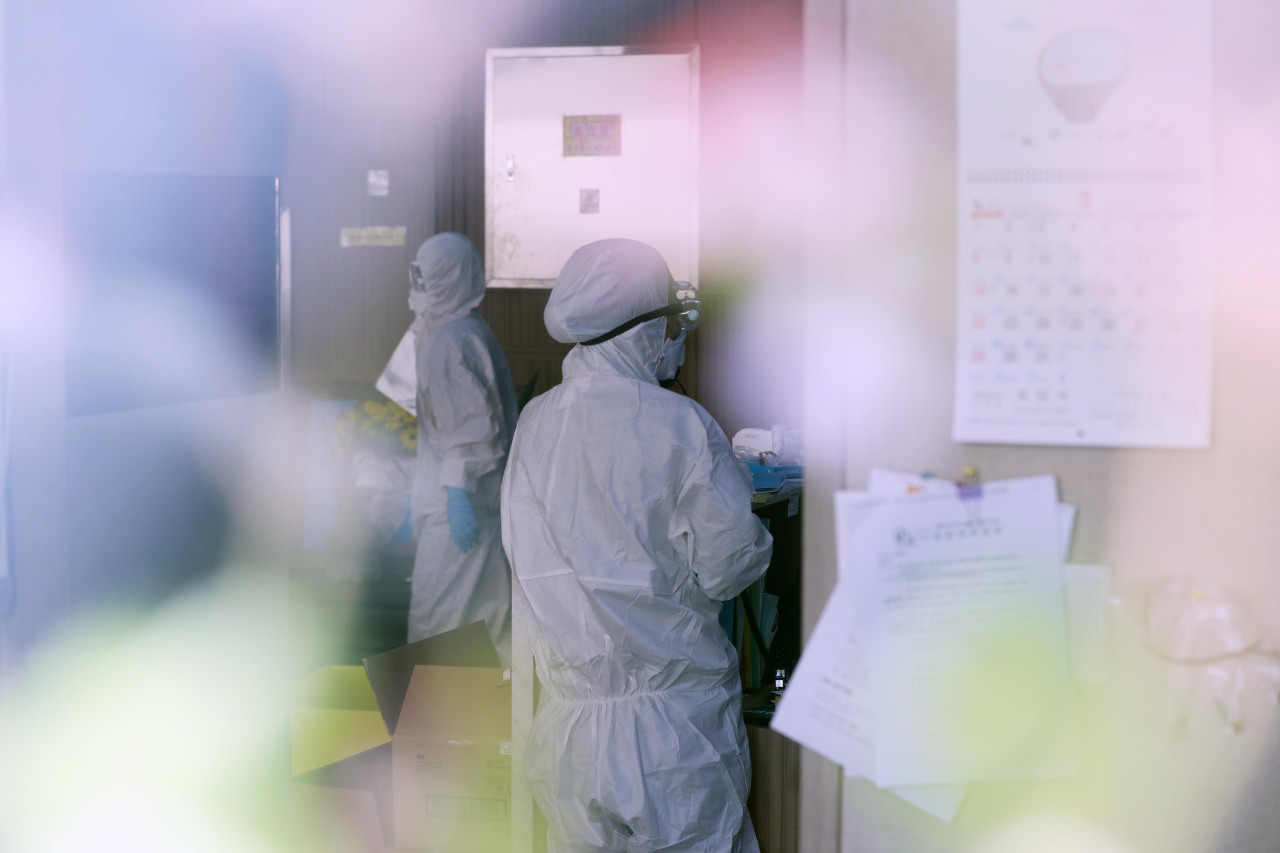New virus infections up again; cluster outbreaks, imported cases in focus
By YonhapPublished : March 21, 2020 - 11:16

South Korea saw a slight uptick in daily new infections of the novel coronavirus on Saturday as the country braced for sporadic cluster infections and a rise in imported cases.
The 147 new cases, which were detected Friday, brought the nation's total infections to 8,799, according to the Korea Centers for Disease Control and Prevention (KCDC). It was so far the second highest number of new cases this week following 152 new cases identified on Wednesday.
The country's death toll has surpassed 100 since it reported its first fatality a month ago.
So far, 102 people, mostly elderly patients with underlying illnesses, have died from the respiratory virus that emerged in China late last year,
The pace of daily new infections has shown marked signs of slowing since the second week of this month as health authorities completed extensive testing of 210,000 Shincheonji followers at the center of the rapid spread.
But the authorities are still on high alert over new clusters of infections, including at a call center in Seoul's Guro district and nursing hospitals in Daegu and surrounding North Gyeongsang
Province.
Of the 147 new cases, 69 are in Daegu and 40 are in North Gyeongsang, the KCDC said. The total number of confirmed cases in Daegu and North Gyeongsang, the two epicenters of the virus outbreak here, stood at 6,344 and 1,243, respectively.
Other major provinces and cities have also reported some infections, with Seoul identifying 15 additional cases and its surrounding Gyeonggi Province adding 12 more cases.
The total number of imported virus cases rose by six to 23.
To better control imported cases, South Korea will require all arrivals from European nations to get tested for the virus and self-isolate for two weeks starting Sunday. South Korea already tightened border checks for all people coming from abroad earlier this week.
With unknown virus sufferers who have not developed symptoms apparently causing significant numbers of infections, the government has called for people to avoid nonessential gatherings in crowded places, such as religious facilities, nursing homes, internet cafes and karaoke rooms.
Since raising the virus alert level to "red," the highest level, on Feb. 23, health authorities have focused on halting the spread of the virus in Daegu and North Gyeongsang.
On Sunday, the government designated Daegu and three other hard-hit areas in North Gyeongsang as "special disaster zones," allowing it to subsidize about half of the recovery spending and exempt people there from paying taxes and utility fees.
The World Health Organization declared last week that the global coronavirus crisis is a pandemic as the virus has spread to every continent except Antarctica.
South Korea had released a total of 2,612 fully recovered novel coronavirus patients from hospitals as of Friday, up 379 from a day earlier, the KCDC said.
The number of daily cured people exceeded the number of daily new infections in South Korea last week for the first time since Jan. 20, when the virus was first detected on South Korean soil.
The number of people being checked for the virus and under quarantine came to 15,704 as of Friday, up 179 from the day before, the KCDC said. The country has tested a total of 327,509 suspected cases, with 303,006 testing negative. (Yonhap)





![[From the Scene] Monks, Buddhists hail return of remains of Buddhas](http://res.heraldm.com/phpwas/restmb_idxmake.php?idx=644&simg=/content/image/2024/04/19/20240419050617_0.jpg&u=20240419175937)





![[Graphic News] French bulldog most popular breed in US, Maltese most popular in Korea](http://res.heraldm.com/phpwas/restmb_idxmake.php?idx=644&simg=/content/image/2024/04/18/20240418050864_0.gif&u=)



![[From the Scene] Monks, Buddhists hail return of remains of Buddhas](http://res.heraldm.com/phpwas/restmb_idxmake.php?idx=652&simg=/content/image/2024/04/19/20240419050617_0.jpg&u=20240419175937)

![[KH Explains] Hyundai's full hybrid edge to pay off amid slow transition to pure EVs](http://res.heraldm.com/phpwas/restmb_idxmake.php?idx=652&simg=/content/image/2024/04/18/20240418050645_0.jpg&u=20240419100350)

![[Today’s K-pop] Illit drops debut single remix](http://res.heraldm.com/phpwas/restmb_idxmake.php?idx=642&simg=/content/image/2024/04/19/20240419050612_0.jpg&u=)